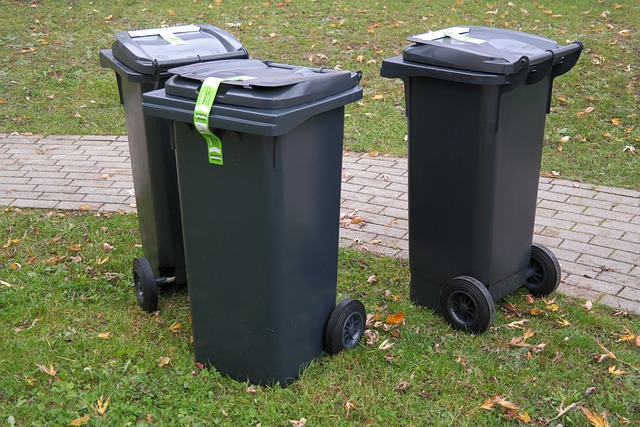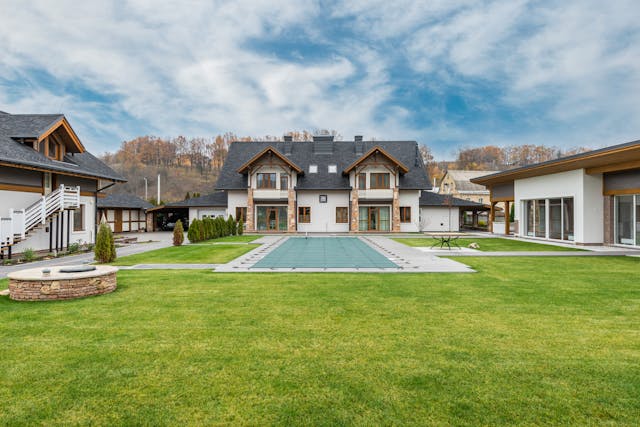
- Sustainable stewardship merges environmental responsibility with property management, focusing on energy efficiency and resource conservation.
- Engaging and investing in the community bolsters societal well-being and enhances business reputation and trust.
- Long-term sustainability in property management demands initial investments in green technologies and infrastructure for future benefits.
- Continuous improvement through innovation and stakeholder engagement is essential for responsible property management.
- Transparency and accountability in sustainability efforts build stakeholder trust and encourage continuous environmental responsibility.
As business owners and entrepreneurs, the importance of effective and responsible property management cannot be overstated. In today’s world, where environmental sustainability is at the forefront of global discussions, adopting a holistic approach to property management is not just a trend but a necessity.
Sustainable stewardship encompasses maximizing profits and considering the impact that your actions have on the environment, communities, and future generations. This blog post will delve into the fundamental principles of sustainable stewardship and how they can benefit your business in the long run.

Embracing Sustainability Practices
One of the core principles of sustainable stewardship is embracing sustainability practices in property management. This includes implementing energy-efficient measures, reducing water consumption, minimizing waste generation, and promoting eco-friendly transportation options. By incorporating these practices into your property management strategy, you can reduce your carbon footprint and lower operational costs in the long term.
Renewable and Eco-Friendly Practices
In addition to implementing energy conservation and waste reduction measures, embracing sustainability practices involves procuring sustainable materials and resources. Opting for renewable and eco-friendly building materials, furnishings, and landscaping can significantly reduce the environmental impact of your property.
Community Engagement and Social Responsibility
Another critical aspect of sustainable stewardship is community engagement and social responsibility. As a property owner or manager, it is crucial to engage with local communities, listen to their needs and concerns, and contribute positively to their well-being. By fostering strong relationships with stakeholders, you can create a more inclusive and socially responsible environment that benefits everyone involved.
Creating Opportunities
Effective community engagement and social responsibility extend beyond mere interaction with local populations. It involves creating opportunities for communities to thrive by supporting local businesses, investing in public infrastructure, and providing access to essential services. A focus on social equity, ensuring that the benefits of your property and its operations are accessible to all segments of the community, mainly the marginalized and underserved, is crucial.
Community-Specific Challenges
Additionally, implementing programs that address community-specific challenges such as unemployment, education, and healthcare can amplify your contribution to societal well-being. By prioritizing these areas, businesses bolster their reputation, build trust among community members, and contribute to sustainable development goals, creating positive change.
Long-Term Planning and Investment
Sustainable stewardship requires a long-term perspective on planning and investment decisions. Instead of focusing solely on short-term gains, consider how your actions today will impact future generations. Investing in energy-efficient technologies, green building materials, and sustainable infrastructure may require initial capital investments. But will pay off in terms of reduced maintenance costs, increased property value, and enhanced reputation in the long run.
Erosion Control
Incorporating erosion control measures into your property management strategy is crucial in sustainable stewardship. Erosion causes damage to the environment and leads to additional costs for repairs and restoration. You should also work with a reputable company offering reliable erosion control services to facilitate this. The company can provide comprehensive solutions to prevent and mitigate the effects of erosion, ensuring long-term sustainability for your property.
Transparency and Accountability
Transparency and accountability are key pillars of sustainable stewardship in property management. Communicating openly with stakeholders about your sustainability goals, progress towards achieving them, and any challenges or setbacks along the way is essential. By being transparent about your efforts to promote sustainability, you can build trust with tenants, investors, regulators, and other stakeholders who value environmental responsibility.
Regular Evaluations
Adopting a transparent and accountable approach also means regularly evaluating your sustainability initiatives. It’s about setting measurable targets and utilizing data-driven methodologies to track progress. Such practices ensure that your operations align with the highest sustainability standards and demonstrate a commitment to continuous improvement. Engaging in third-party audits or certification programs related to green building or environmental management can further validate your efforts and bolster credibility.

Continuous Improvement Through Innovation
Finally, sustainable stewardship involves a commitment to continuous improvement through innovation. Keep abreast of new technologies, best practices, and regulatory requirements related to sustainability in property management. Encourage creativity within your team to develop innovative solutions that enhance efficiency while minimizing environmental impact. By continuously striving for improvement in your sustainability efforts, you can stay ahead of the curve and position your business as a leader in responsible property management.
Innovation Process
Engaging your stakeholders in the innovation process is a powerful strategy for continuous improvement. Stakeholders, including tenants, employees, and local communities, often have unique insights and ideas that can lead to impactful sustainability initiatives. Creating forums for feedback, such as surveys or town hall meetings, encourages a culture of openness and collaboration.
In conclusion, adopting a holistic approach to effective and responsible property management through sustainable stewardship is not just good for the planet – it’s also good for your bottom line. By embracing sustainability practices, engaging with communities, responsibly investing long-term, prioritizing transparency, accountability, and continuous improvement through innovation, you can create a more resilient, profitable business that contributes positively to society while preserving resources for future generations. As business owners and entrepreneurs, it’s time to take action and embrace sustainable stewardship as a core principle guiding all aspects of your property management strategy.





